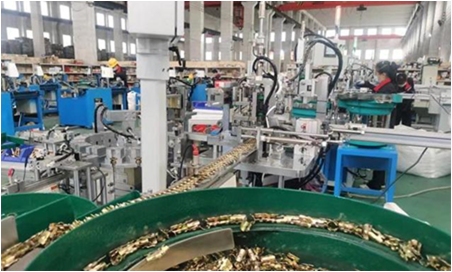Aug . 05, 2024 09:51 Back to list
Understanding the Importance of M24 Anchor Bolts in Construction and Engineering Applications
Understanding M24 Anchor Bolts Specifications and Applications
Anchor bolts are critical components in construction and engineering, serving the essential function of connecting structural elements to concrete foundations. Among the various sizes and types of anchor bolts, M24 anchor bolts stand out for their strength and versatility. This article delves into the specifications, manufacturing, applications, and advantages of M24 anchor bolts, providing a comprehensive overview for engineers, architects, and construction professionals.
Specifications of M24 Anchor Bolts
The designation M24 signifies that the bolt has a nominal diameter of 24 millimeters. Anchor bolts come in different grades and classes, which determine their mechanical properties and corrosion resistance. Typically, M24 anchor bolts are manufactured from high-strength steel, often conforming to standards such as ASTM A325 or A490.
In terms of dimensions, the thread pitch of M24 bolts is usually 3.0 mm. M24 bolts can also vary in length, depending on the intended application, and can come with different thread types, such as coarse or fine thread. The surface finish of anchor bolts can vary as well; options include hot-dipped galvanization, zinc plating, and stainless steel finishes, which provide varying levels of corrosion resistance.
Manufacturing Process
The production of M24 anchor bolts involves several critical steps, including forging, machining, and finishing. The initial stage typically involves the forging of steel bars into bolt shapes, followed by the cutting of threads using machining techniques. Heat treatment can be employed to enhance strength and durability. Finally, the bolts are subjected to various surface treatment processes to improve corrosion resistance and ensure longevity.
Quality assurance is paramount in the production of anchor bolts. Manufacturers often conduct tensile and shear strength tests to ensure that their products meet required specifications and standards. This rigorous testing process ensures that M24 anchor bolts can withstand significant loads and stresses in practical applications.
Applications of M24 Anchor Bolts
m24 anchor bolt

M24 anchor bolts are widely used in various applications across different sectors. They are commonly found in construction projects, including buildings, bridges, and other infrastructure. In particular, M24 anchor bolts are often employed to secure steel columns, beams, and machinery to concrete foundations.
In the industrial sector, M24 anchor bolts play a vital role in anchoring heavy machinery and equipment, providing stability and safety in operation. They are also utilized in the agricultural sector for securing silos, grain bins, and other structures to concrete pads.
The versatility of M24 anchor bolts means they can adapt to numerous environments, from marine applications where corrosion resistance is crucial, to seismic zones requiring high-strength connections to withstand dynamic forces.
Advantages of M24 Anchor Bolts
One of the primary advantages of using M24 anchor bolts is their high load-bearing capacity. With their robust design and superior materials, they can handle significant tensile and shear forces, making them ideal for demanding applications. Additionally, the standardized size and specifications of M24 anchor bolts facilitate ease of use in construction logistics, as they are readily available and compatible with numerous structural components.
Moreover, the various surface treatment options available (such as corrosion-resistant coatings) enhance the longevity of M24 anchor bolts, providing reliable performance even in harsh environments.
Conclusion
In summary, M24 anchor bolts are indispensable elements in modern construction and engineering. Their standardized specifications, robust manufacturing processes, and wide-ranging applications render them crucial for maintaining the structural integrity of various projects. As industries continue to evolve and demand increasingly durable and reliable fasteners, M24 anchor bolts will remain a vital component in building safe and stable structures.


